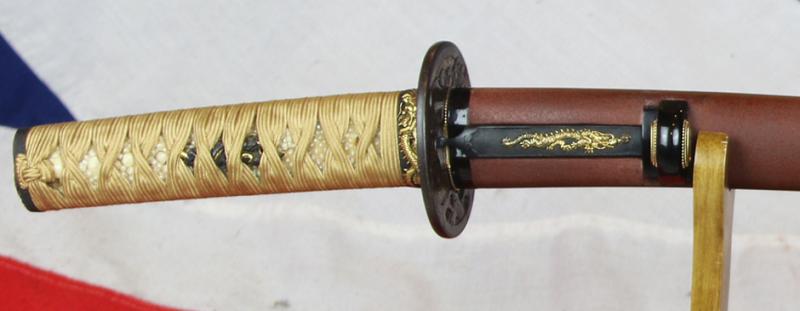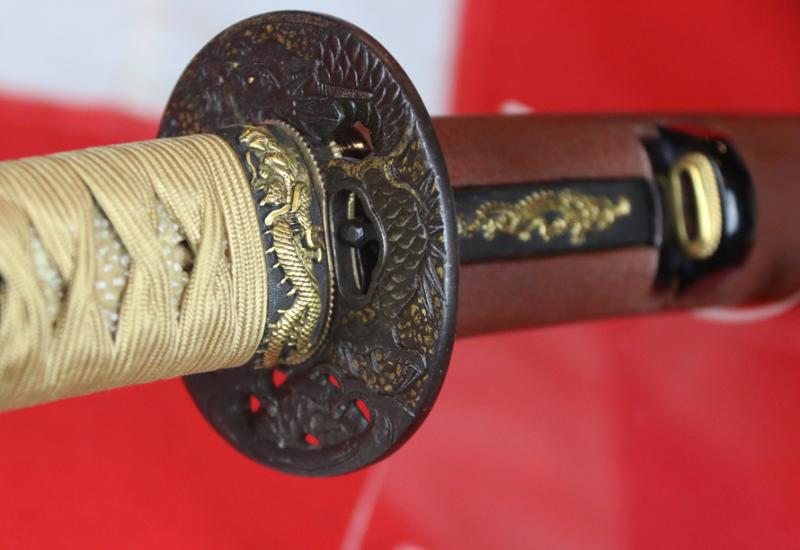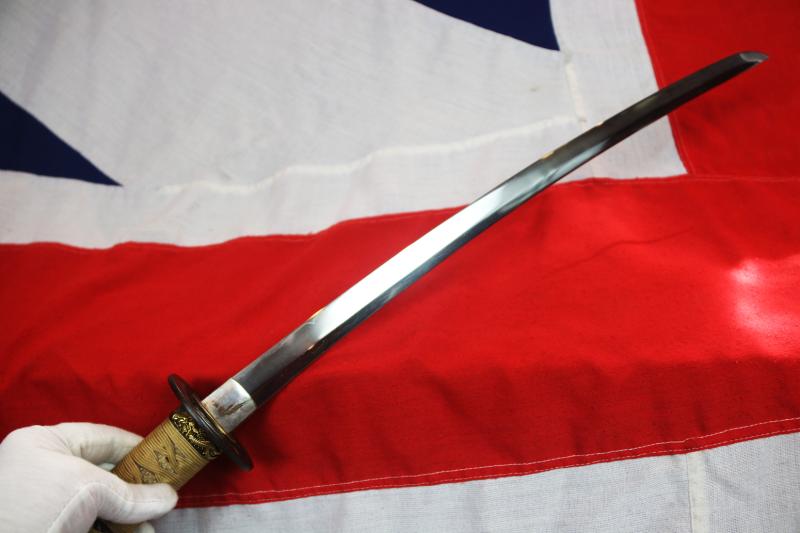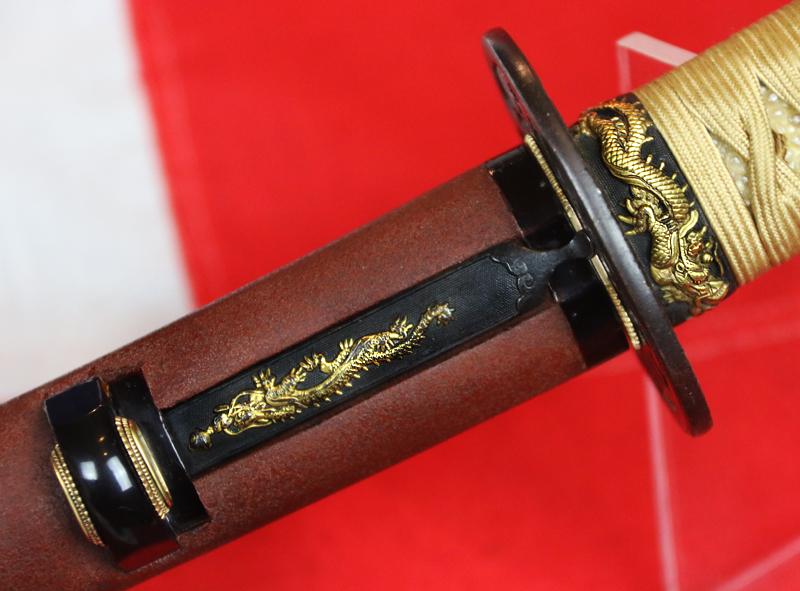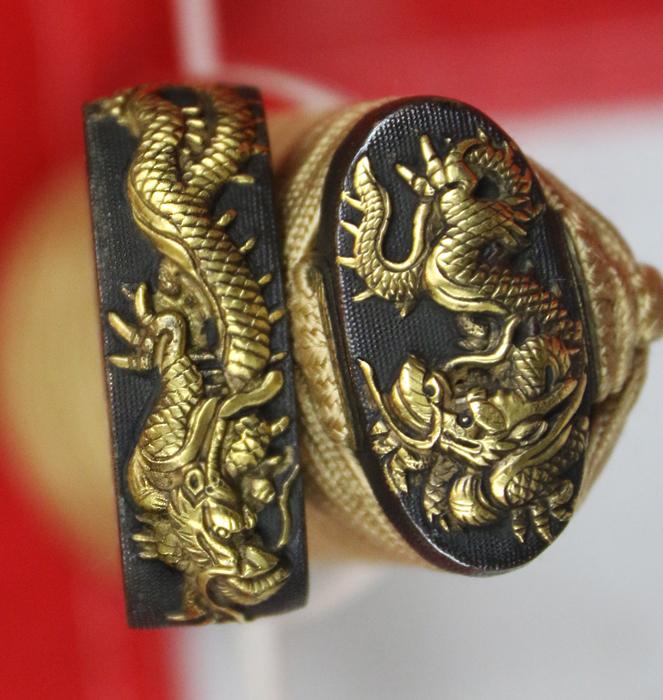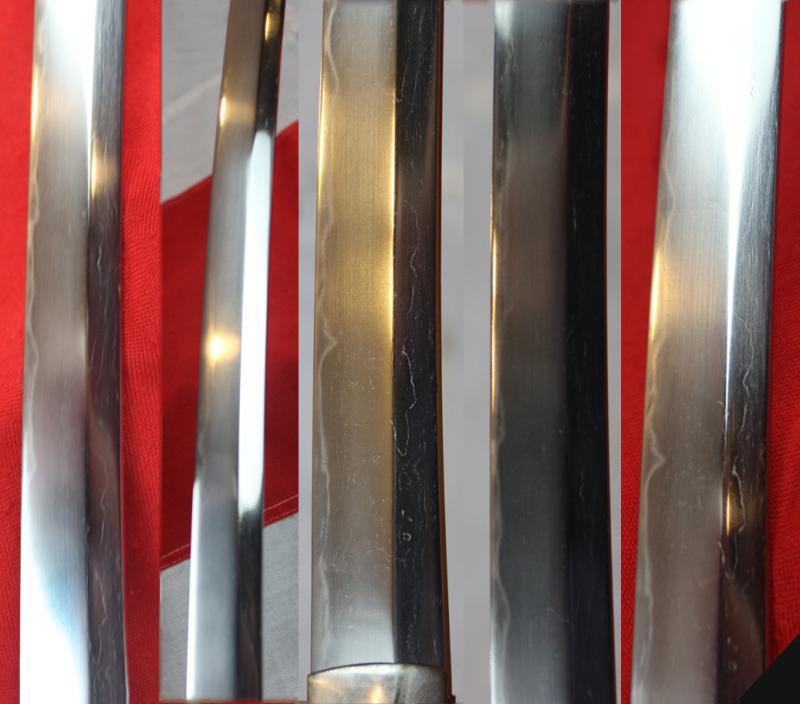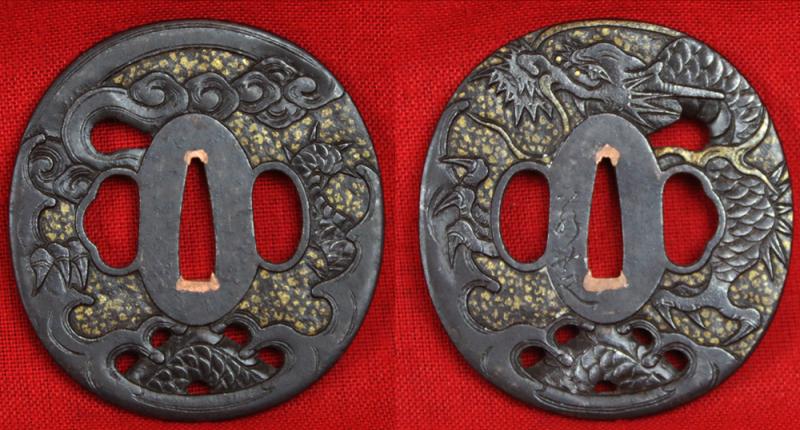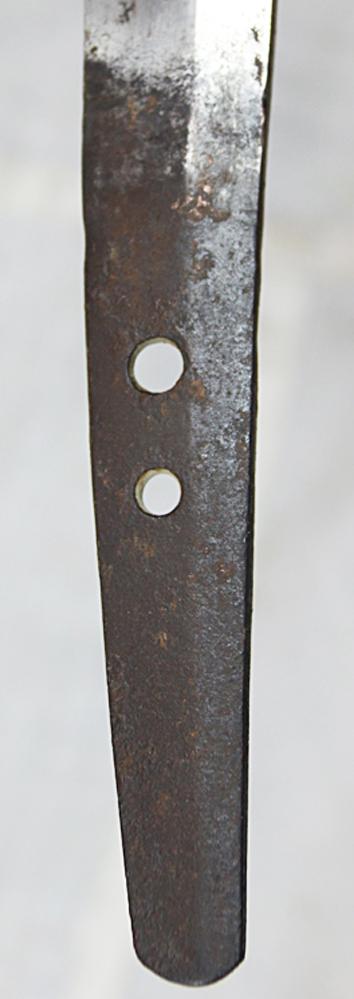A Fabulous 500 Year Old Koto Period 'Dragon' O-Wakazashi or Chisa Katana With Original Edo Period Suite of Goto School Dragon Fittings. Worthy of Any Museum Collection, or A Single Statement Piece to Display Its Extraordinary Beauty and Condition
Koto period blade, around 500 years old, with a deep and most elegant curvature, mounted with an original, Edo period, wonderful suite of Goto school sword fittings in shakudo and pure gold, of fuchikashira, kozuka, kogai and menuki, all with finest decor of Dragons in superb takebori displaying fine detailing. They are all matching fittings, and it also has a very fine ‘dragon in clouds’ signed tsuba, in iron, and pure gold embellishments,.
The tsuba is signed, and the tsuka hilt has a gold silk wrap. The saya is brown ishime stone finish lacquer with buffalo horn kurikata and mounts. The blade is , beautiful with a typical Koto period narrow hamon.
The habaki is silvered copper.
The Gotō School of sword-fittings makers was founded in the fifteenth century by Gotō Yūjō, who is said to have been patronized by the shogun Ashikaga Yoshimasa (1435–1490). The work of the Gotō masters is characterized by painterly designs carved in high relief on a ground of shakudō (an alloy of copper and gold chemically treated to turn a rich blue-black), finished in nanako (tiny circles punched regularly over the surface to give it a granular appearance) with colourful accents in gold and silver. The succeeding generations of Goto masters continued to work in these soft metals and concentrated on the smaller sword fittings, such as kozuka (the handle of the small utility knife fitted into a slot on the back of a sword scabbard), kōgai (a skewer-like hairdressing tool carried in the front of the scabbard), and menuki (a pair of grip ornaments secured by the handle wrappings). The production of the stouter sword guards, or tsuba, was left to other masters. While earlier generations had not signed their work, the Gotō masters in about 1600 began to authenticate the work of their predecessors; the attributions usually were engraved on the backs of the pieces themselves. These attributions bear testimony to the keen interest in early sword fittings as status symbols for high-ranking samurai.
Chisa katana have been in use as far back as the 15th or 16th century. The swordi was used by the personal samurai guard of the daimyo clan lord, especially used for close quarters fighting within, say a castle, and also to behead a defeated opponent and sometimes to commit ritual suicide. The wakizashi was another one of several short swords available for use by samurai including the yoroi toshi, tand the tanto. The term wakizashi did not originally specify swords of any official blade length and was an abbreviation of "wakizashi no katana" ("sword thrust at one's side"); the term was applied to companion swords of all sizes. It was not until the Edo period in 1638 when the rulers of Japan tried to regulate the types of swords and the social groups which were allowed to wear them that the lengths of katana, chisa katana and wakizashi were officially set.
Kanzan Sato, in his book titled "The Japanese Sword", notes that the wakizashi may have become more popular than the tanto due to the wakizashi being more suited for indoor fighting. He mentions the custom of leaving the katana at the door of a castle or palace when entering while continuing to wear the wakizashi inside. Wakizashi were worn on the left side, secured to the obi waist sash. Although they appear to be likely a relative expensive luxury compared to other antique swords from other nations, they are in fact incredible value for money, for example a newly made bespoke samurai style sword blade from Japan will cost, today, in excess of £11,000, take up to two years to complete, will come with no fittings at all, and will be modern naturally with no historical context or connection to the ancient samurai past in any way at all. Our fabulous original swords can be many, many, hundreds of years old, stunningly mounted as fabulous quality works of art, and may have been owned and used by up to 30 samurai in their working lifetime. Plus, due to their status in Japanese society, look almost as good today as the did possibly up to 400 years ago, or even more. Overall 29.5 inches long and the blade is 21 inches long.
Code: 23491



